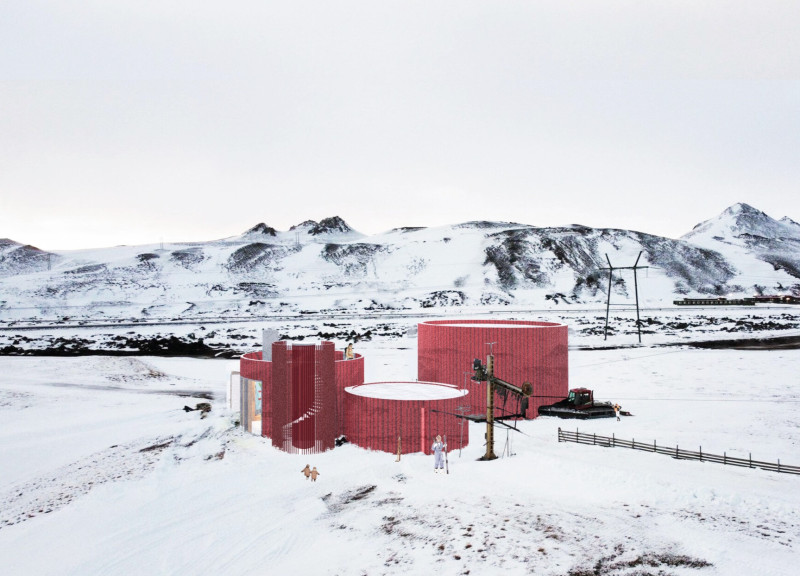5 key facts about this project
At its core, the project serves multiple functions, catering to diverse user needs. From private spaces to communal areas, the design thoughtfully allocates spaces that encourage both individual introspection and social gatherings. The layout is organized to facilitate smooth circulation, allowing for easy navigation throughout the various zones of the structure. Essential components such as entrances, exits, and transitions between spaces are precisely crafted, enhancing accessibility and encouraging exploration.
The choice of materials within the project is particularly noteworthy. The design incorporates a carefully curated palette that balances durability and visual warmth. Materials such as cast-in-place concrete provide structural integrity while embodying an industrial aesthetic that resonates with contemporary architectural trends. In tandem, natural timber finishes are utilized, introducing organic textures and warmth that soften the overall appearance. Glass elements are strategically employed to maximize natural light penetration, establishing a connection between the indoor and outdoor environments. These design choices reflect a commitment to sustainability and environmental consciousness, promoting energy efficiency through passive heating and cooling strategies.
Unique design approaches are evident throughout the project, notably in the way it responds to site-specific challenges. For example, topographical variations are embraced rather than altered, with the design incorporating terraces and stepped formations to follow the natural landscape. This method not only enhances visual interest but also creates outdoor spaces that can be utilized for a variety of recreational purposes. The incorporation of green roofs and living walls further establishes an ecological dialogue with the surroundings, promoting biodiversity and improving air quality.
The use of color within the project also deserves attention, as it plays a significant role in the overall atmosphere. The design employs a restrained color palette, allowing the architecture to speak for itself while subtly enhancing the various architectural features. This approach ensures that the focus remains on the craftsmanship and character of the spaces, rather than on overly decorative elements which could detract from the core design intent.
Moreover, the project integrates advanced technological solutions, which facilitate modern living while maintaining a user-friendly interface. Smart home systems and energy-efficient utilities are seamlessly integrated into the architectural framework, ensuring that the structure remains attuned to the evolving needs of its occupants.
In examining this project, one appreciates its deep engagement with both the physical setting and the people it serves. The architectural design is a testament to the potential of thoughtful planning and innovative solutions to create spaces that are not only visually appealing but also deeply functional and respectful of their context. For anyone looking to understand the nuances of this project further, a detailed exploration of the architectural plans, sections, and design details will provide valuable insights into the various elements that contribute to its success. Visitors are encouraged to delve into the specific architectural ideas and designs to fully appreciate the intricacies and intent behind this remarkable undertaking.


























